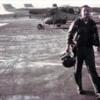As previously mentioned above, mostly hogwash, I think. I flew hundreds of "high" missions over a 20 year span, many over 11 hours (the standard mission in my early days). Several dozen knee or elbow aches which resulted in the flight doc saying, "let me know if it doesn't itself resolve over night", one more serious ache in the chest that required me to go by the flight med office after 48 hours for a "quick look", and one serious event which kept me in the hospital overnight for observation and a 96 hour grounding. That's it. I know of only one real RD in my time, which was exciting for the pilot but not a big issue...the suit inflated and the pilot returned to base (remember, the pilot wears a full pressure suit for that exact reason...if an RD occurs, the cockpit depressurizes, but the pilot is in the suit and it keeps him pressurized). Several more slow decompressions, over the 20 years, with little to no impact. I know of no pilot in the program really "grounded" (for more than a few days) simply for a bends event. Also, not only aren't the airplanes that old (virtually all built between 1983 and 1989), but the engines were replaced in the mid-to-late 90s, and the cockpit updated over the last few years with state-of-the-art avionics. They are as good as you can get.
I retired a few years ago, but between Huggy, Kuma and me it sounds like we cover the aircraft from about 1970 to today. While there have undoubtably been a few oddballs in the crew force over the years...no unit is perfect...overall the crew force is a great bunch of people and I'd put them up against any unit in the Air Force for flying skill, comraderie, concern for their squadron mates and families, and mission effectiveness. Not better mind you, but just as good as any other unit you can name!


